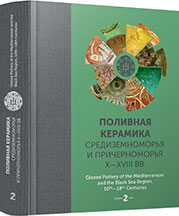Поливная керамика из средневекового поселения у с. Полски Градец в районе г. Раднево (Южная Болгария)
Glazed Wares from the Medieval Settlement near Polski Gradets, Radnevo Region (Southern Bulgaria)
Author(s): Boris D. Borisov
Subject(s): History, Archaeology, Middle Ages, 6th to 12th Centuries
Published by: Издательский дом Stratum, Университет «Высшая антропологическая школа»
Keywords: Bulgaria; Byzantine period; glazed wares; sgraffito wares; painted wares; typology
Summary/Abstract: This study presents glazed pottery from the medieval settlement near Polski Gradec village, occupied during the 11th—12th century. There are three main groups of glazed vessels: plain wares, painted wares and sgraffito wares. They are compared with the glazed pottery from various centres from the Byzantine cultural circle. According to the colour of the clay, the plain wares are divided into two groups — white wares and red wares. The white clay pottery is presented by two classes — “undecorated wares” and Persian lusterware with light blue glaze. The red clay pottery consists of the classes “Brown glazed ware”,“Spatter Painted Ware” and Sgraffito Ware. There are three sgraffito groups — Fine Sgraffito — which has three styles: “Fine style”, “Spiral style”, “Developed style” — “Champlevée”, and the so-called “Bulgarian sgraffito”. Plates of the known class of the “Painted sgraffito” were not found in the settlement. The Painted Wares belong to the “Green and brown painted wares” class and the vessels are divided into three groups.The analysis of the glazed pottery from the territory of the Byzantine cultural circle let us identify the production centres of particular groups of vessels. This raises the question about the trade routes and the circulation of the glazed pottery. It also helps us understand the trade ties in and out of the Byzantine Empire.
Book: Поливная керамика Средиземноморья и Причерноморья X—XVIII вв.
- Page Range: 287-315
- Page Count: 29
- Publication Year: 2017
- Language: Russian
- Content File-PDF

